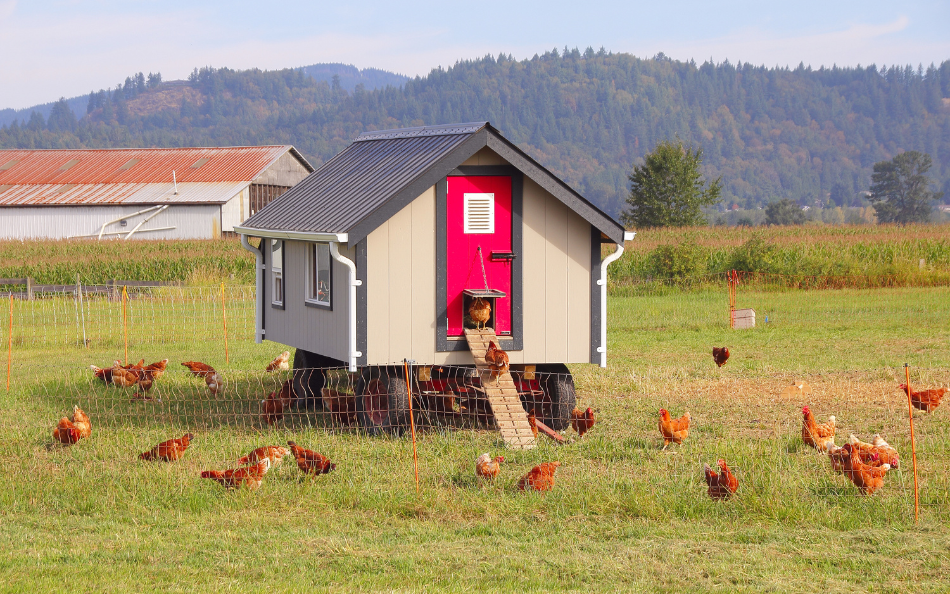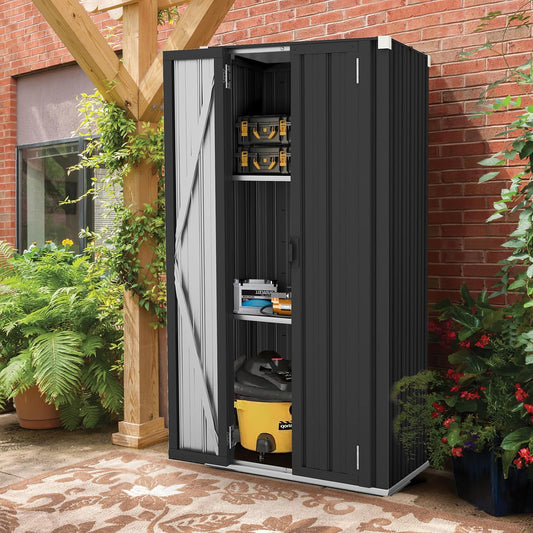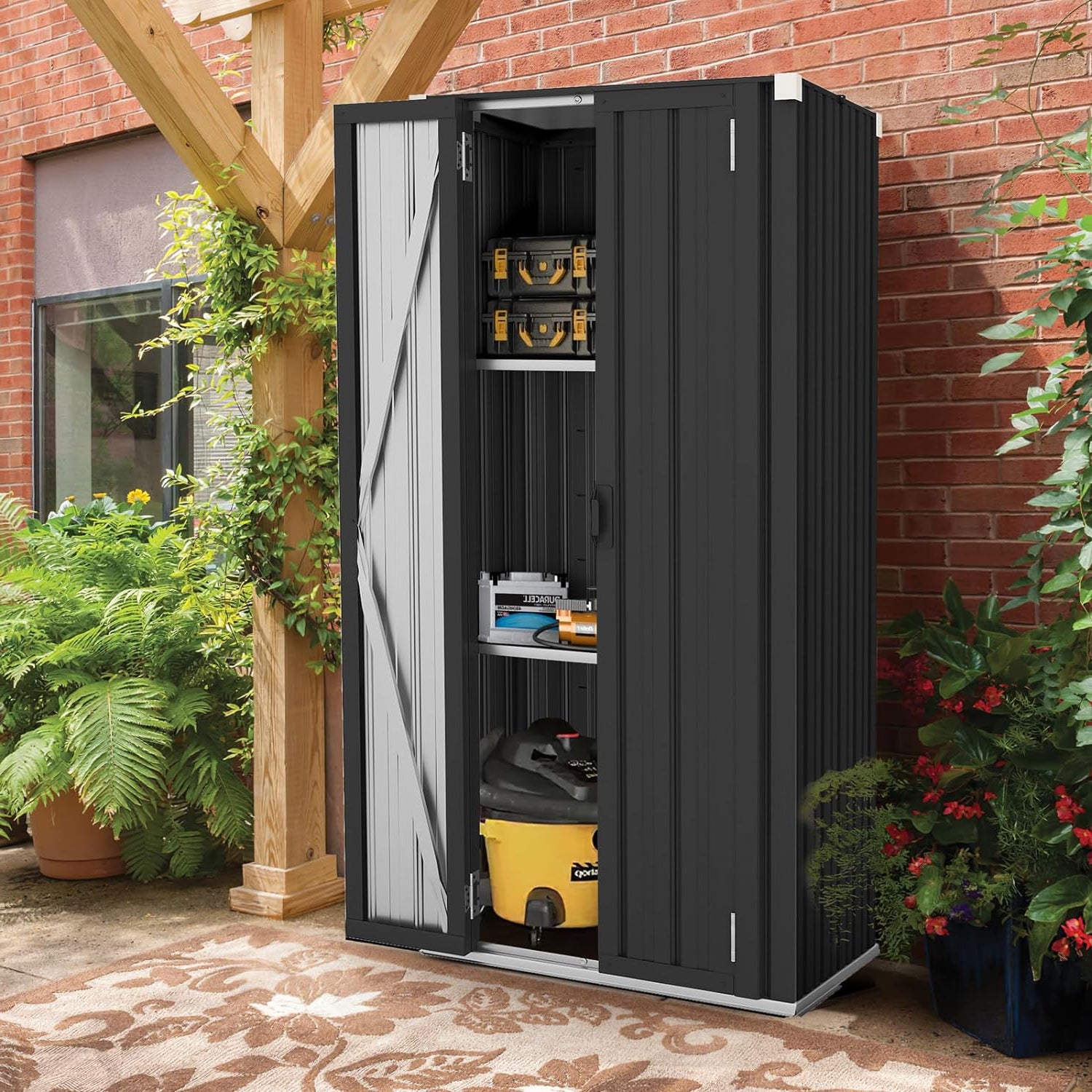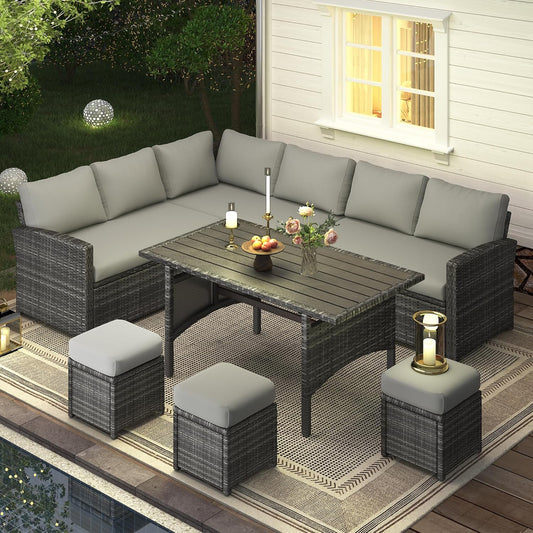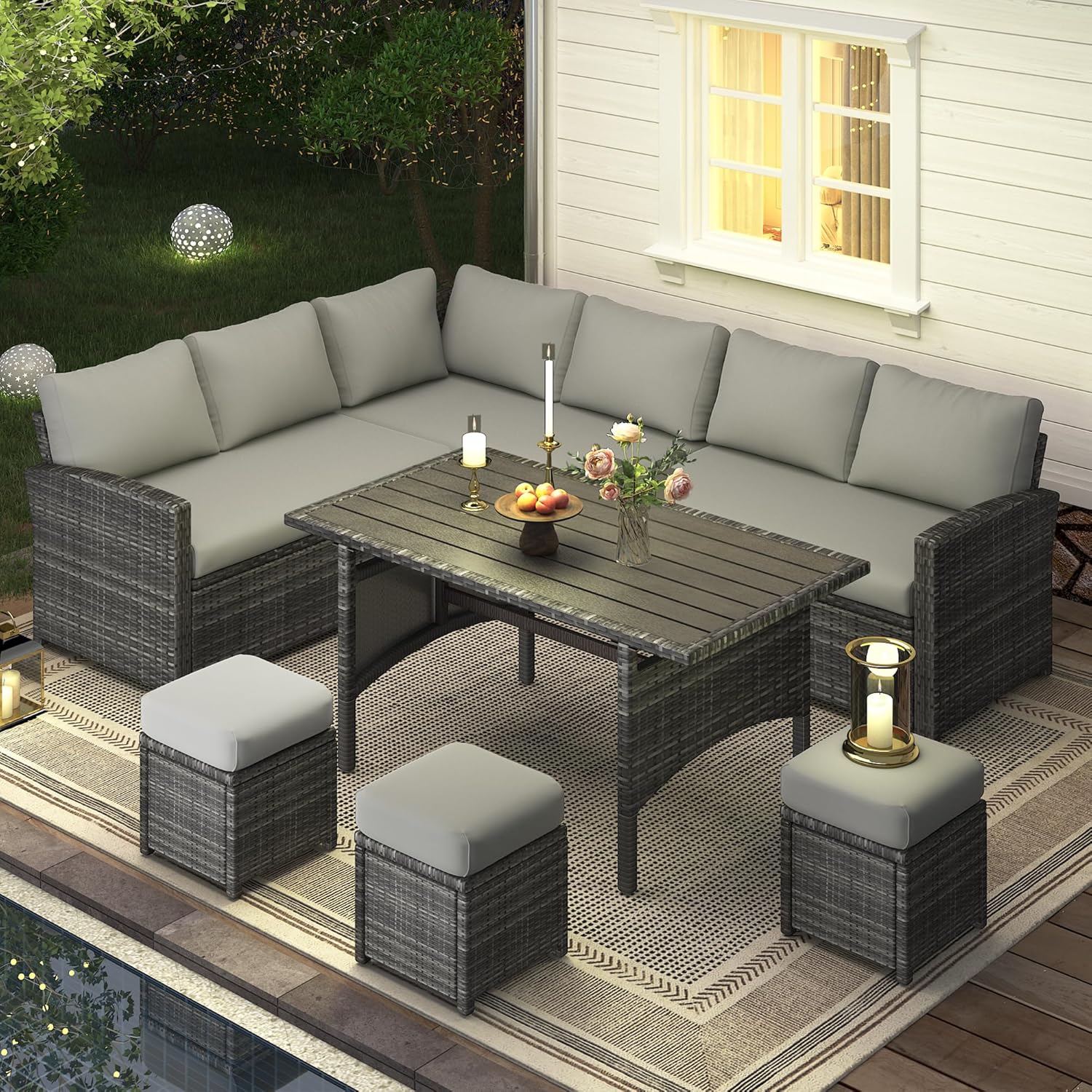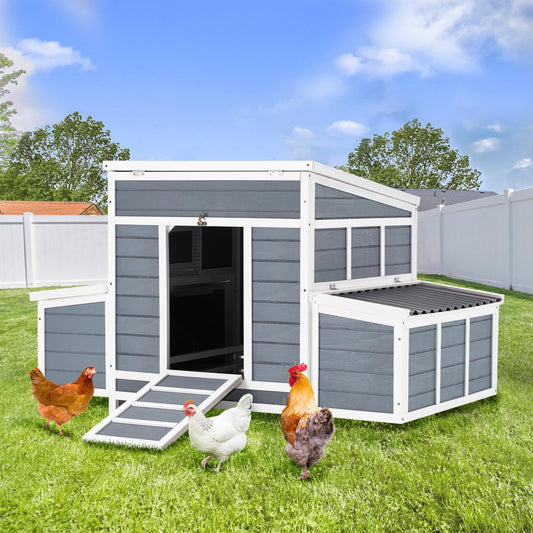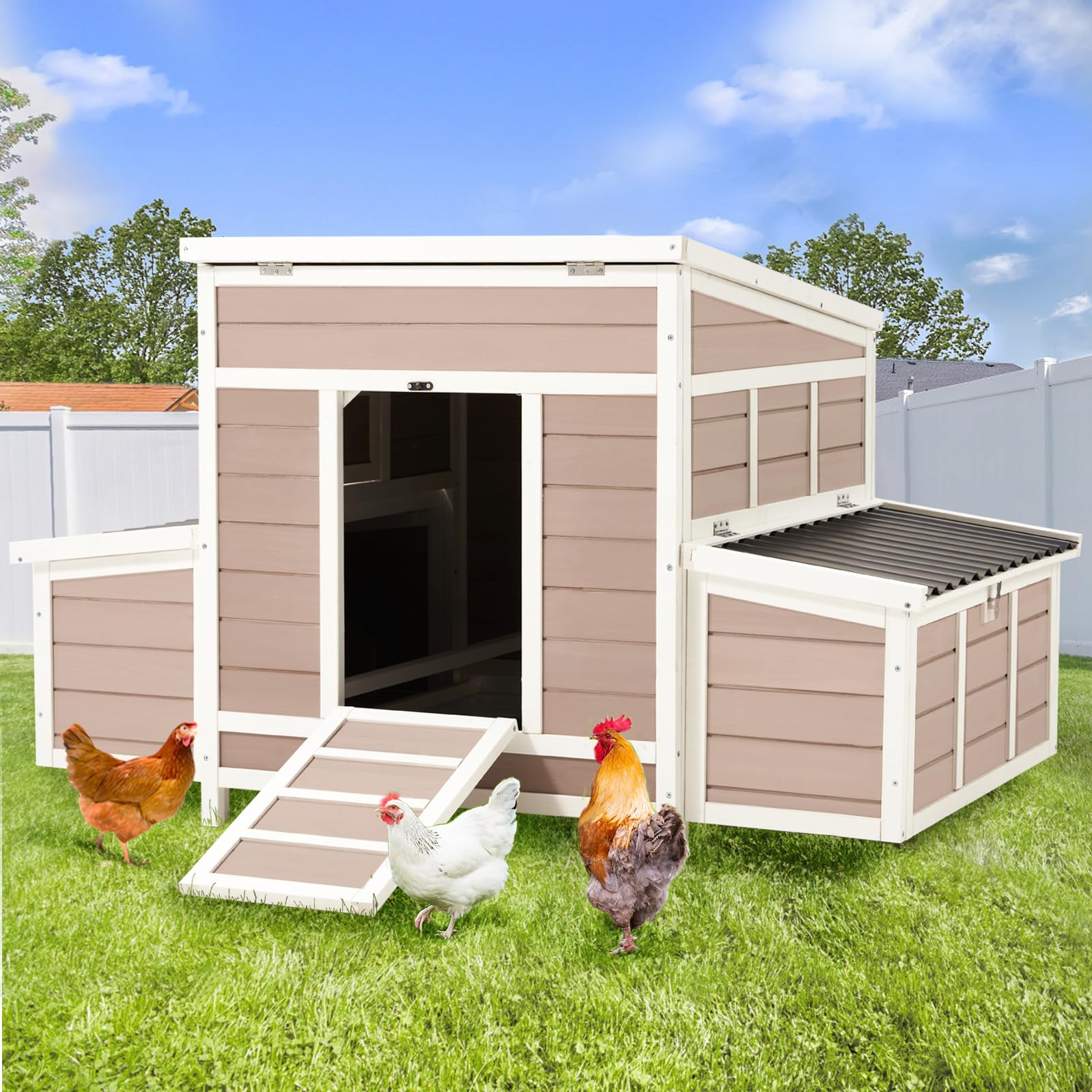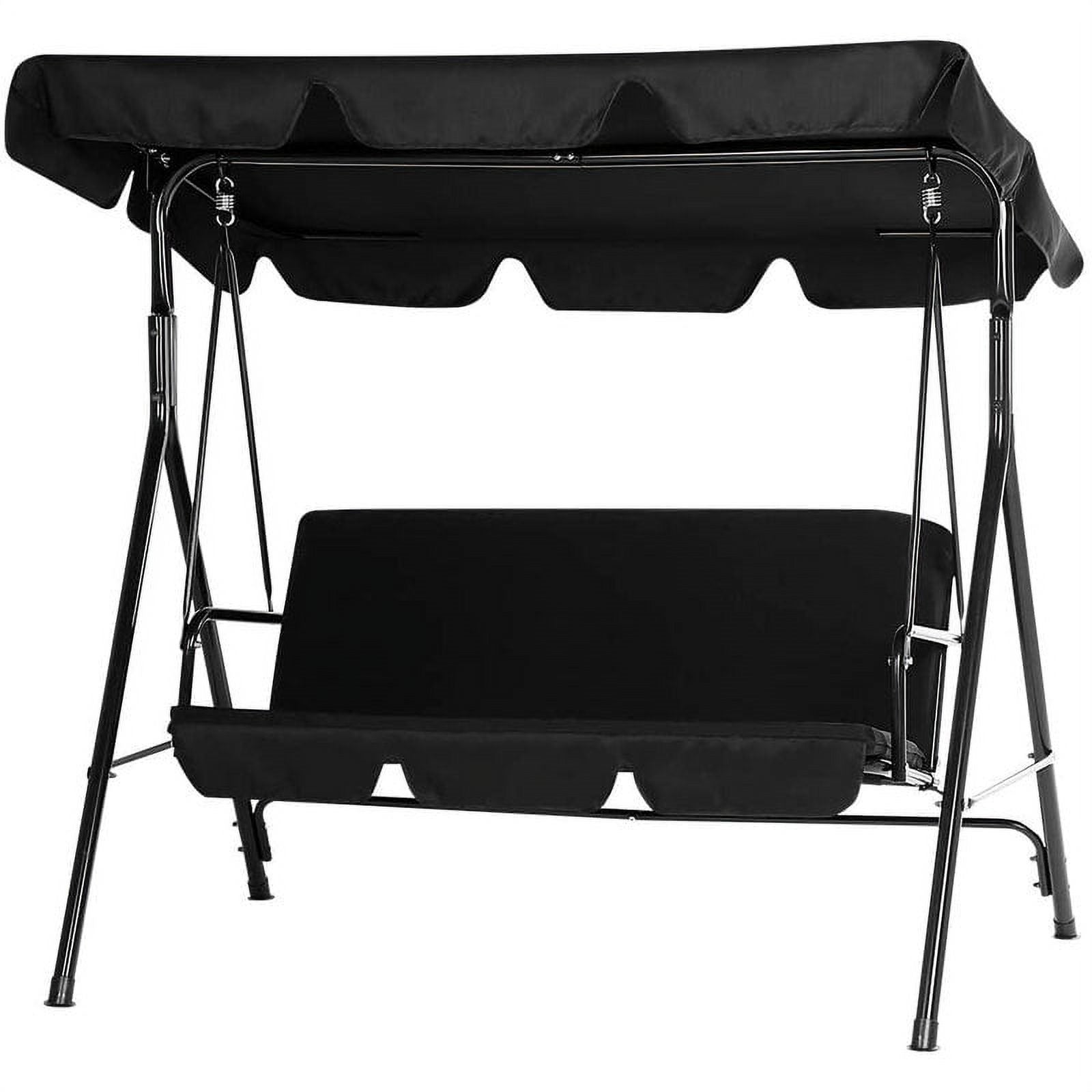Constructing a high-quality chicken house starts with selecting the right materials. The materials you choose will impact the design for your large chicken house, influencing its durability, insulation, and ability to withstand various weather conditions. A well-built coop protects your flock from predators, ensures proper ventilation, and creates a comfortable environment for healthy egg production.
This guide explores chicken house build plans, covering essential material choices, from structural components like wood and metal to flooring options and weather-resistant features. We will also discuss insulation and maintenance strategies to extend the lifespan of your coop. By understanding the strengths and limitations of different materials, you can create a functional and long-lasting chicken house design that meets your flock’s needs while ensuring efficiency and ease of upkeep.
Wood vs. Metal Chicken Houses: Which is Better for Your Flock?
When deciding between wood and metal for your chicken house, it's important to consider durability, maintenance, and overall comfort for your flock. Both materials offer distinct advantages, and the right choice depends on your specific needs.
Wooden Chicken Houses
Wood is a classic and widely used material for large chicken houses due to its natural insulation and versatility.
Pros:
· Insulation: Wood helps maintain a stable internal temperature, making it a great option for both warm and cold climates.
· Aesthetics and Customization: Wooden coops blend well with outdoor spaces and can be easily modified or expanded.
· Availability: Materials like pine, spruce, and hemlock are affordable and easy to work with.
Considerations:
· Maintenance: While untreated wood can be susceptible to moisture and pests, proper sealing or pressure treatment can enhance durability and longevity.
· Cleaning: Regular maintenance, such as applying protective coatings and keeping the coop dry, ensures a hygienic space for your chickens.

Metal Chicken Houses
Metal coops, often made from galvanized steel or aluminum, provide a strong, durable, and low-maintenance alternative to wood.
Pros:
· Durability: Metal is resistant to pests, rot, and harsh weather conditions, ensuring a long lifespan.
· Low Maintenance: Unlike wood, metal requires minimal upkeep and is easy to clean.
· Predator Protection: The sturdy structure offers excellent security for your flock.
Considerations:
· Temperature Control: While metal can retain heat in the summer and become cooler in winter, proper ventilation and insulation can effectively regulate temperature for year-round comfort.
· Condensation Management: In humid environments, adding ventilation panels helps prevent excess moisture inside the coop.
Both wood and metal have their strengths when it comes to building a reliable and comfortable chicken house. Wood provides insulation and customization, while metal offers superior durability and low maintenance. Choosing the right material depends on your climate, space, and personal preferences.

For those who prefer a traditional wooden coop, the YODOLLA 81” Large Chicken Coop is an excellent choice. Made from high-quality fir wood, it features a waterproof PVC roof, built-in perches, and a removable tray for easy cleaning, ensuring a cozy and practical home for your flock.

If durability and security are your top priorities, the YODOLLA 6m Large Metal Chicken Cage provides a rust-resistant galvanized steel frame and hexagonal wire mesh for wind resistance, keeping your chickens safe in all weather conditions. Its spacious walk-in design accommodates up to 20 poultry, making it a great choice for larger flocks.
With proper care and setup, whether you choose wood or metal, you can create a safe, long-lasting, and functional home for your chickens.
Choosing the Best Flooring: Dirt, Sand, or Concrete?
Selecting the appropriate flooring for your chicken house is essential for maintaining a healthy and comfortable environment for your flock. Common flooring options include dirt, sand, and concrete, each offering distinct advantages and considerations.
Dirt Flooring
Utilizing the natural ground as flooring is cost-effective and allows chickens to engage in natural behaviors like scratching and dust bathing. However, dirt floors can become muddy, leading to unsanitary conditions and potential health issues. They may also be susceptible to burrowing predators. Implementing deep litter methods can help manage cleanliness and provide some insulation.

Sand Flooring
Sand offers excellent drainage, reducing moisture and odor buildup. It is easy to clean and can help control parasites. Sand also stays cool in warmer climates, providing comfort during hot weather. However, in colder regions, sand can become too cold, requiring additional bedding for insulation. Regular raking and occasional replacement are necessary to maintain hygiene.
Concrete Flooring
Concrete floors are durable, predator-proof, and easy to clean. They prevent burrowing predators from accessing the coop and do not harbor parasites. Concrete can be hosed down for straightforward maintenance. However, it can be hard on chickens' feet and may become cold in winter. Adding ample bedding can mitigate these issues, providing cushioning and insulation. Additionally, ensuring proper drainage during installation prevents water accumulation.
In conclusion, the choice of flooring depends on factors such as climate, predator presence, and maintenance preferences. Concrete offers security and ease of cleaning, sand provides excellent drainage and comfort in warm climates, while dirt flooring allows natural behaviors but requires diligent management to maintain hygiene and prevent predator intrusion.
Weather-Resistant Materials for Different Climates
Selecting weather-resistant materials for your backyard chicken coop is essential to ensure the safety and comfort of your flock across various climates. The right materials can provide insulation, durability, and protection against environmental elements, making a well-thought-out design for your chicken house crucial for long-term use.
Hot Climates
In regions with high temperatures, it's important to choose materials that promote ventilation and prevent overheating. Open-air designs, often referred to as "roofed wire boxes," enhance airflow while providing shelter from predators. Using hardware cloth for walls maximizes ventilation, while positioning the coop in natural shade or adding shade structures helps reduce heat buildup. Light-colored roofing materials can also reflect sunlight, keeping the interior cooler.

Cold Climates
For colder regions, insulation is key to maintaining warmth. Plywood walls with added insulation, such as rock wool, help regulate temperature while allowing moisture to escape, preventing dampness and mold growth. Covering the exterior with weather-resistant siding, like painted wood, adds an extra layer of protection against extreme weather. Proper ventilation is also crucial to prevent moisture buildup, which can lead to respiratory issues in chickens.
Humid Climates
In high-humidity areas, materials that resist moisture and mold are essential. Pressure-treated lumber or naturally rot-resistant woods like cedar and redwood are ideal for framing and siding, as they effectively withstand moisture. Elevating the coop off the ground helps prevent water buildup and improves airflow. Screened windows or vents covered with hardware cloth further reduce humidity levels inside the coop.
By selecting the right materials for your climate, you can create a durable and well-designed chicken house that keeps your flock safe and comfortable year-round.
Insulation and Protection: How to Extend the Lifespan of Your Chicken Coop
Proper insulation and protection are essential for extending the lifespan of your chicken coop and ensuring a comfortable environment for your flock. Effective insulation helps regulate temperature, reduces moisture buildup, and safeguards against harsh weather conditions.

Insulation Materials
Selecting the right insulation material is crucial. Foam boards, such as 1.5-inch Styrofoam sheets, are popular due to their lightweight nature and excellent insulating properties. These can be installed between walls and ceilings to maintain optimal temperatures. Fiberglass batts are another option, offering good insulation when properly installed and sealed to prevent moisture ingress. For eco-friendly alternatives, consider natural fibers like wool or hemp, which provide effective insulation and are safe for chickens.
Moisture Control
Moisture can lead to mold, mildew, and wood rot, compromising the coop's structural integrity. To combat this, ensure adequate ventilation to allow humid air to escape, reducing condensation. Installing roof vents or windows can facilitate airflow. Additionally, applying a non-toxic, waterproof sealant to wooden surfaces can protect against moisture damage and extend the coop's lifespan.
Weatherproofing
Protecting the coop from external elements is vital. Elevating the coop off the ground prevents water from seeping in during heavy rains. Using weather-resistant materials for the roof and walls, such as metal roofing or treated wood, adds durability. Regular maintenance, including checking for and repairing leaks or drafts, ensures the coop remains a safe haven for your chickens.
By focusing on proper insulation, moisture control, and weatherproofing, you can significantly enhance the durability of your chicken coop, providing a healthy and secure environment for your flock year-round.
Conclusion
Building a durable and well-insulated chicken coop is essential for ensuring the safety, comfort, and longevity of your flock’s home. Choosing the right materials, such as weather-resistant wood or sturdy metal, helps protect against harsh climates, while proper insulation and ventilation prevent moisture buildup and temperature fluctuations. Additionally, selecting the best flooring and maintaining regular upkeep will extend the lifespan of your coop.

For those looking for a high-quality 6 chicken coop, the YODOLLA 56" Large Chicken House is an excellent option. Made from premium natural fir wood with a non-toxic varnish, it provides a safe and comfortable space for chickens. Featuring six large nesting boxes, a waterproof PVC roof, and raised perches, it offers durability and protection against the elements.
Whether you're raising a small backyard flock or a larger group, investing in a well-built coop ensures a secure, functional, and comfortable home for your chickens year-round.












